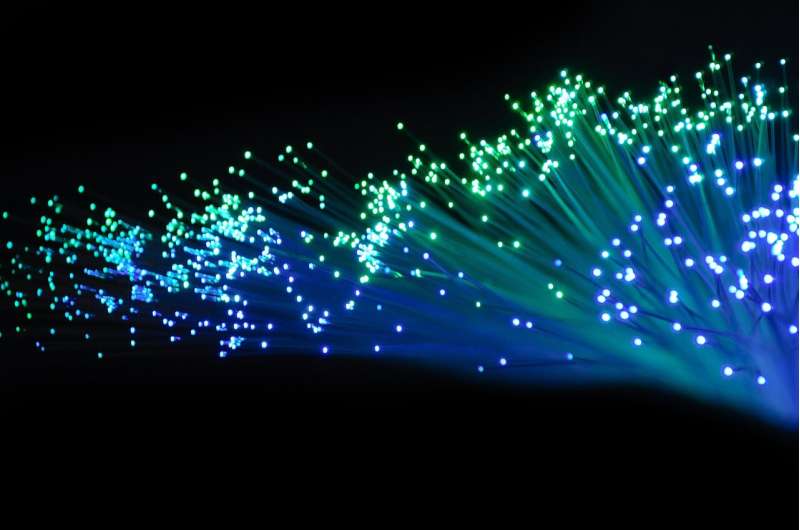Increasing optical fiber capacity and channel data rates in submarine communication cables

At the bottom of the Atlantic Ocean lies a multitude of cables carrying bundles of optical fibers that support telecommunications between continents. The MAREA cable is considered the gold standard of these transatlantic cables and spans 6,605 km from Virginia Beach, Virginia, U.S. to Bilbao, Spain. It came into service in 2018.
Marc Stephens is part of a team of researchers from Infinera Corporation, U.S. and Steve Grubb of Facebook that demonstrated a record-breaking transatlantic transmission across MAREA. Stephens will present the results generated from the group's recent field trial during a session at the Optical Fiber Communication Conference and Exhibition (OFC), being held virtually from 06-11 June 2021.
Originally intended to achieve a capacity of 20 terabytes per second per fiber pair and a data rate of around 200 gigabytes per second per wavelength, the team's improvements to MAREA enabled a capacity of 30 Tb/s and a data rate of 700 Gb/s, both of which are records for submarine cables of this length.
"There are over 400 subsea cables deployed around the world, and they include several different types of cable design, stretching back 20 years in some cases," said Stephens. "We can use the tools in our optical engine to boost capacity on all of these cable types in a similar way to MAREA, although the absolute capacity may vary, because they are not optimized for coherent transmission as well as MAREA is."
Achieving the 30 Tb/s capacity required a combination of increasing the number of bits within each transmitted optical symbol, and tight, interference-free spacing between wavelengths on each fiber. Using a technique called super Gaussian probabilistic constellation shaping, the group was able to increase the overall spectral efficiency of each signal by selecting an appropriate distribution of individual symbols within to maximize the data carried.
The total data throughput enabled by these adjustments is equivalent to about 300 million simultaneous phone calls.
Stephens' role in the work was to help understand the impacts of this constellation shaping approach with the hope of extending it to other submarine cable types beyond MAREA.
"I feel confident in saying that the MAREA cable will remain the benchmark for capacity per fiber pair across the Atlantic for the foreseeable future," he said. "We feel there is still more to come but in a different way to how things have evolved in the past."
The second record—the 700 Gb/s per wavelength channel data rate—required increasing the symbol rate of the signals carried across MAREA. Although this comes at the cost of increased impairments, both optical and electrical, the tradeoff can be mitigated using Nyquist subcarriers, which divide the single optical signal into multiple, independent signals, allowing for the same advantages without the associated problems.
These advances come with a limit—namely, the Shannon limit, a theoretical maximum in the data capacity for a given fiber and signal amplifier chain. All subsea cables, including MAREA, are bumping up against the Shannon limit. With hopes to extend cable capacity into the petabit per second range across a bundle of fibers, the Shannon limit is the primary obstacle on each individual fiber.
"The challenge soon becomes how do we make a petabit capacity at a cable level a practical reality for the operator? So, it is about shrinking the transponder and reducing its power consumption," Stephens said. "Neither of those two are constrained by the Shannon limit, so the laws of physics are not stopping us getting there."
Provided by The Optical Society




















